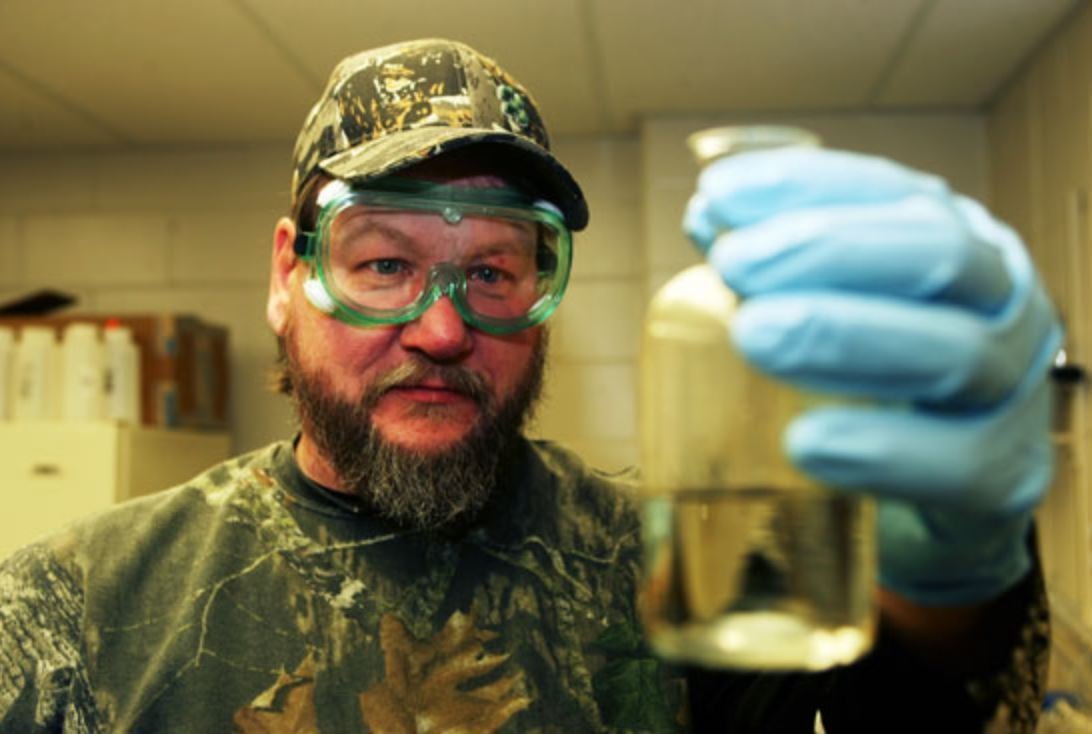The government released Thursday its first in-depth look at the health risks created by chemical compounds found in hundreds of military water sources and what illnesses may be linked to even minimal exposure to them.
Bottom line: The man-made chemical compounds found in military fire-fighting foam, perfluorooctane sulfonate and perfluorooctanoic acid, known commonly as PFOS and PFOA, are hardy, toxic chemicals that do not degrade in soil or water, and can be absorbed by humans through drinking water, or through the soil or air. The compounds even get to fetuses. The study reported the chemicals have been found in umbilical cords and human breast milk.
In people, the study found that exposure could be associated with pregnancy complications, thyroid issues, liver damage, asthma, decreased responsiveness to vaccines, decreased fertility and kidney and testicular cancer.
The report’s findings on human exposure — and which looked at the whole population, not just military locations — were based on multiple studies of populations near contaminated water sources. However, causality could not be directly established because there could have been multiple ways a person could have been exposed instead of just drinking water. The compounds are present in everyday household goods, but are concentrated in military firefighting foam.
But the study also looked at the compounds effects on animals.
Based on 187 peer-reviewed studies where laboratory rats or other animals directly ingested the compounds, the results were more dire. At the highest dosages, the animals experienced liver or other organ failure. At significantly decreased exposure levels the subject rats survived but had increased prenatal loss in pregnant lab rats, and increased loss of the pups after birth. Long-term effects at lower doses included long-term impacts to rat testes and ovaries.
The “Toxicological Profile for Perfluoroalkyls” was produced by the Department of Health and Human Services’ Agency for Toxic Substances and Disease Registry (ATSDR). It was released Thursday for public comment. To leave a public comment on the report, the study directed respondents to go to regulations.gov. There the study can be searched by name.
RELATED

Over the last several weeks Military Times has interviewed former service members or family members who have reported cancers, miscarriages and other chronic illnesses they suspect may be tied to drinking contaminated military base water.
On military bases, the compounds seeped into the soil and water through the use of fire fighting foams. After the foams were sprayed on aircraft, the remaining foam and chemicals would just be dumped onto the ground, or into a drain, multiple former airmen have told Military Times.
“It was just draining into whatever drains were around,” Paul Cyman, who served as an Air Force firefighter from 1969 to 1973. “It would go into the storm drains. There was no containment at all.”
The report had been withheld by the administration, which reportedly called it a “public relations nightmare,” according to news reports. After a bi-partisan push by lawmakers demanding its release, the report was released for comment Thursday.
“Based on this information, I encourage federal, state, and local environmental regulators to examine whether they are appropriately communicating the risks presented by and adequately addressing the presence of PFOS and PFOA in drinking water,” said Rep. Mike Turner, R-Ohio.
RELATED

Sen. Jeanne Shaheen, D-N.H., who represents the former and contaminated Pease Air Force Base, got funding passed in the 2018 and 2019 defense bills for a nationwide study that will look at eight to 10 military bases to study the effects of PFOS and PFOA exposure.
The 2019 bill also supports creation of a national registry for service members, their families and the public to report exposure to the contaminants.
“I’m glad the administration heeded the bipartisan call in Congress and finally published these reports,” Shaheen said.
Tara Copp is a Pentagon correspondent for the Associated Press. She was previously Pentagon bureau chief for Sightline Media Group.









